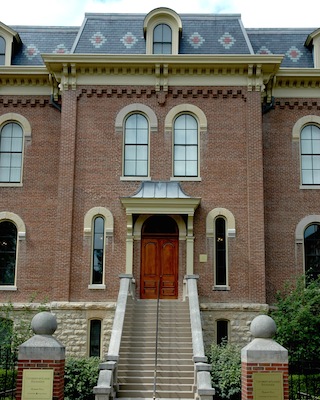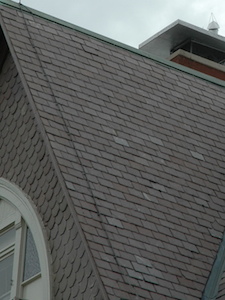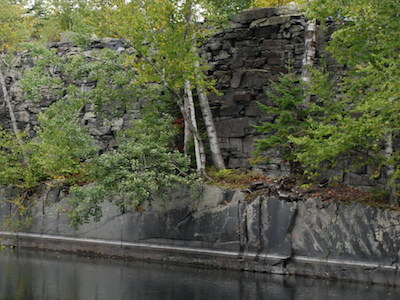Geology on the Roof at Harker Hall
The oldest campus building continually in use, Harker Hall was constructed in 1878. One of its striking features is a mansard roof, which means the roof has two angles of slope on each side of the building and the lower part of each side is steeper than the upper part.
This roof, like most of the others on the Main Quad, is covered with slate shingles. Slate is a hard, durable metamorphic rock that splits preferentially in one direction, making it easy to produce shingles or paving stones from the rock.
Black and gray slate are the most common types, probably quarried in New England or southeastern Quebec. Other colors – red from New York state and green from Vermont – are rarer and more expensive. Therefore, most of the roof is black, while different colors are used sparingly to provide the pleasing design.
The roof of the Natural History Building and many others use the plentiful variety of Vermont slate known as “purple and green mottled.”
At Monson Quarry in Maine, the natural tendency of slate to split into sheets is visible just above the water line, where the vertical wall shows a series of stair-steps. The rock above is breaking into blocks along both sheets and cracks called joints.
Further geological information about Vermont Slate
Sources
- http://www.neslate.com/home
- http://commons.wikimedia.org/wiki/File:MonsonQuarry.jpg
- UIHistories Image IDs 5137 and 4871
Image selection and text by Eileen A. Herrstrom 2014




